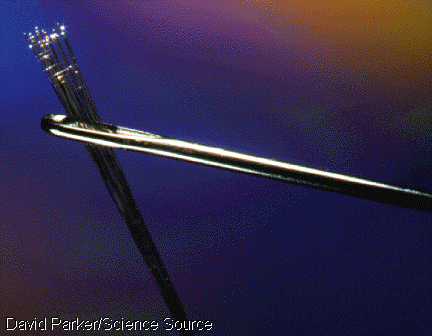



|
Digitalisation is the representation of data as combinations of 1's and 0's, binary digits. Digitalisation has led to developments in communication. Methods of transmitting digitised data has meant we can incorporate all media types into our communications, sound, text, pictures, animations and video. Digitalisation has allowed such developments as video conferencing, where all those in conference can see and hear one another but not actually be together. Digitalisation of different media types has allowed nearly all data transmissions to be done via optical fibre, a faster more efficient cabling used for digitised data transfer. This has become so apparent that telecommunications companies' world-wide have replaced all analogue wiring with digital data compatible fibre optic cabling. The Internet, the latest, fastest growing communication media is based entirely on digitalisation, without it, it simply won't be possible, we would have to revert to the inefficient analogue signal. So digitalisation has changed the way data of any media (sound, image, video) is stored, processed and transmitted. Examples of devices that have given way succumbed to the digital era would include:
DAT � Digital Audio Tape sound waves are sampled several thousand times per second and are transformed into a series of pulses that correspond to patterns of binary numbers that are then recorded on tape or optical disk CD � Compact Disc A digital recorder measures the waveforms thousands of times per second and assigns a numerical value, or digit, to each of the measurements. These digits are then translated into a stream of electronic pulses. These Electronic pulses are placed on a CD where they can be retranslated for playback. Magnetic disks - round flat pieces of flexible plastic (floppy disk) or inflexible metal (hard disk) coated with a magnetic material that can be electrically influenced to hold information recorded in digital (binary) form.
Data Processing Computers � Modern Computers are based on binary, processing only data represented in binary digits. Without digitalisation the computer would be nothing. Telephones � All modern phones cellular and land - based send voice data digitally. Fiber Optics � this new transmission media is based on digitalisation. Binary digits are represented on this cabling as pulses of light. A pulse of light will represent a binary 1, lower light levels or no light between pulses (depending on the standard in use) will represent binary 0. This transmission media is particularly fast because transmission is at the speed of light.
a picture of optical fiber cabling, shown to scale => |